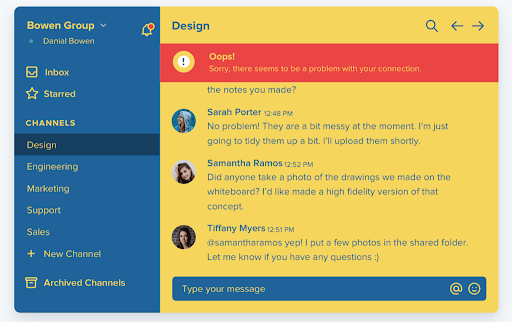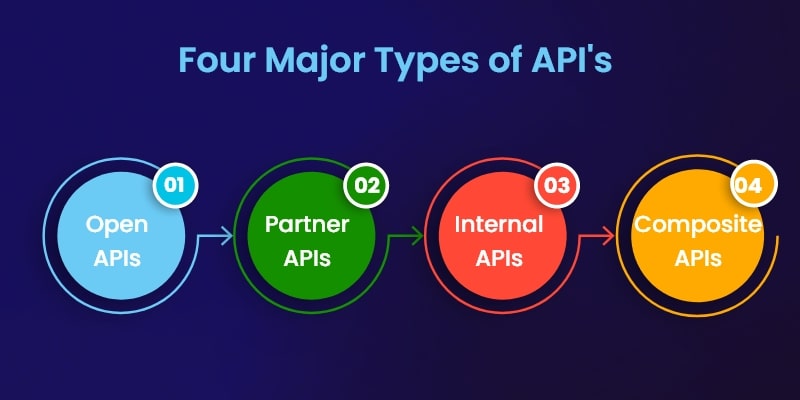APIs, API development, API integration, and the list continues!
These terms are thrown around a lot of the time. But what is an API? How does an API work?
Are you part of the same confusion? No worries! Here we’re with all the answers!
You can also listen to this podcast and get relevant insights about API Integration and Development.
In the present time, API plays a dominant part in the tech world. There is a prominent surge in the use of API, and to a degree that a lot of applications may not be possible without APIs. The fact is, we’re surrounded by APIs, and make use of them every day. (wondering how?)
Right from logging into the social media apps to booking tickets online and making payments, everything is possible by integrating API into the applications.
Though, how does this process actually work? Thinking on the same point?
Here is an answer for the same! We’ve come up with this article that covers everything from what is API to its working, and importance.
Bookmark the article! We’re sure this will save you bucks during the web & mobile app development process, and help you to get better results for your applications.
Before getting into some scrambled and techy words, let us first give you a brief on API and its integration.
What is an API? – API Definition Explained
API – an acronym of Application Programming Interface. In simple terms, we can define an API as a set of instructions and protocols for developing and integrating various software applications.
When defined in technical terms, it’s a pile of programming code that enables the data transmission between one software application to another. We can even say that it’s a bridge between the two mobile apps.
Let us explain the same with an example. Whenever you click on the “Connect Facebook” button on Ludo King, the app does not ask you to enter your Facebook details, instead, it collects the data from Facebook and permits you to play Ludo King. – All this is possible due to the API.
Here are small images explaining the process of API.
What is API Integration – An Overview
There are a lot of chatters concerning API integrations. Henceforth, it’s quite easy to get bewildered in the sea of terms, use, and standards.
Although, we’ve come up with an easy definition for API integration. We can say that it is a connection between two or more applications via an application programming interface that permits them to transfer the data.
The key role of API integration is to power the process along with various phases and layers to keep the data synchronized and increase productivity.
These integrations of API makes faultless operations for applications and web systems. Therefore, API integrations is quite crucial phase in the mobile app development. All of the above, you need to go the extra mile in order to achieve optimal and automated business processes for sharing critical data. And, that’s the key point for API integration.
Key Fact:
“API is an interface and is part and parcel of almost everything in the digital world.”
Why We Need API Development & Integration – Its Importance Clarified
So, here comes the most curious question asked to us by our clients – What is the importance of working with APIs and integrating it into the web and app system.
Let’s dive into it.
As we already said that API development plays a major role in sharing and transferring data between various applications without any human interruption. Especially, after the explosion of cloud-based products and applications, there is a high rise in the need for organizations to build a system wherein data is relayed on its own among various software products.
And that’s exactly with the work of an API.
API development and integration is the base of mobile and web applications to enable the connections. Adding more to it, the API eliminates the need to create a similar program from the scratch, there is flexibility to use the existing one for other apps and platforms too. One more reason to focus on creating APIs for developers as well as organizations.
To give you a more clear picture, here are a few points that describe the consequences of API development. The benefits of API are as follows,
Data Monetization
Many of the companies build their own APIs, and when it becomes successful and popular in the market sell them to the organizations. (This is also referred to as API economy)
For instance, when AccuWeather came up with its self-service platform to sell APIs. It just took approximately 10 months to gain the attention of 24,000 developers by selling more than 11,000 API keys.
PRO TIP:
So, if you’re interested in the API economy, then the best thing to do is outsource API development, and then bring it to the market. For more information connect to our API experts.
Seamless Innovation
Innovation has become a new normal in today’s digital world. Custom API development is one such thing that has acquired the attention of the users. custom api integrations offer enormous benefits and flexibility to organizations.
It enables companies to partner with other businesses and serves new services to the users. Ultimately, it generates massive returns with innovative digital transformation.
Here is a short example explaining the same. The fact is Stripe started its API with just seven lines of code. Today, it has partnered with many big organizations and is valued at USD 95 billion this year.
Enhanced Security
While explaining to you what is an API and Its meaning, we’ve talked about the term security. Here is a brief on the same.
Remember, APIs create an extra layer of protection between the server and your application. Thence, it is one of the ways in which the security of your mobile application increases.
Besides that, API developers can strengthen the security by using signatures, tokens, and TLS (Transport Layer Security) encryption. With all of that, implementing API gateways to manage and authenticate traffic with API Management. (discussed in later part of this article)
Enriched Collaboration
On average, the enterprise deals with approximately 1200 cloud applications. And, to manage all of them API plays a major role.
API integration enables all these platforms and apps to communicate with each other. As we already mentioned, through application programming interface companies can automate the flow and improve workplace collaboration.
In fact, it is even observed that without API development services, many organizations have lacked connectivity resulting in major losses.
So, now you know what is API, its benefits, and its importance. But are you convinced enough to build an API. or yet need more info?
The second half of the blog talks about how does an API works, the API development process, how to make an API, its example, and costs.
Keep reading!
Need a Verbal Explanation of What is an API?
Our experts will help you to understand API development & integration. You can even hire API developers from us.
How Does An API Work? – In-Depth Explanation
Before getting into how does an API works, let’s first understand the terminologies of API development. Here we go,
API Key: It is the unique identifier code that is passed in by computer programs to deal with the authentication for the developer, user, or calling program.
Get: This function helps you to get the data from the server as and when needed.
JSON: Defined as JavaScript Object Notion, it is a data format for the application programming interface to exchange the data on the web. On the same note, here the interchange of the data occurs either between two applications, server, or web applications.
Endpoint: To be specific, the touchpoint of interactions between the server and API system is known as Endpoint.
POST: A process to send a piece of data to the API server for either creating or updating the resources.
OAuth: We can call it an authorization framework or open standard authorization for various APIs. The best part about OAuth – it limits and secures the access of the end users’ data that is being used by the third-party websites or applications without accessing their passwords.
REST: REST (Representational State Transfer) is an architectural implementation that is specifically used to embellish the efficiency between the two systems. Basically, the system focused on this type of architecture is known as ‘Restful APIs”. The most common and best example of RESTful API is WorldWideWeb (WWW)
SOAP: Known as an open-source testing tool. It works for operating on the cross-platforms and also automates the non-functional as well as functional testing.
Latency: It works to identify the total time taken by API in the process of return to the response.
API Throttling: A method that regulates the usage of APIs for a particular time period is known as API Throttling. You can even call it API limiting. For instance, if you set the limit of 1500 APIs in a day, and when use hits 1501 requests – A message 429 as HTTP status will be sent by the server to the user.
Rate Limiting: It is a procedure for API to define rates at which users can use the API.
After knowing about what is API development and its terminologies, it’s time to get into how to create an API and how does API works.
Pro Tip:
Looking for API Development Services?
We have a team of API developers who have pro expertise in their niche. Connect with us to create the best APIs for projects.
The Working of API (Application Programming Interface)
Everyone keeps talking about API development though how does an API work. Let’s bring down the answer together. Firstly will understand the API working in the non-technical form, and then will proceed towards the tech thing.
Suppose, you’re planning to book a hotel via ABC App/Website. Firstly, you’ll fill out a form with various details like name, number. Address, location, check-in date, check-out date, and so on. Once you’ve entered these details, according to your requirements a list of hotels will be shown to you.
So, how do you get these end results?
For such rigorous information, API definition came into action. A request via API is sent to the hotel’s website/App in order to access their data. API integration delivers the data from their platform to your platform for displaying the results to the screen.
BONUS!
We’re an API development company that builds APIs by keeping high security in mind. Know more about how we build an API for our clients.
Briefing you more, here the hotel booking platform works as an endpoint whereas API is the intermediate streamlining for transferring the data.
That’s how an API works. Now let’s understand the working in the technical form.
Point 1: Your Application Initiates an API Call: This request is made to retrieve the information. The path of request would be from an application to the web server via API’s URI (Uniform Resource Identifier).
Point 2: A Valid Request is Received: Once the request is initiated API makes a call to a web server or an external program.
Point 3: A Response is Send By Server: With all requested information, the response is sent to API.
Point 4: Data Received: API will send the data to the requesting application. ‘
Here, API also offers security as it acts as a middleman between the two systems. Henceforth, security plays a key role over here.
Now you know how API works, but what about the API development life cycle? Types of APIs, and What is the API development process? Let’s dive deeper into it.
Do You Know?
You can check out our detailed blog on types of API to know which is the best fit for you.
Best API Examples You Must Know!
Just because developing and integrating APIs enables organizations to open up access by sustaining the security and confidentiality of the data. And this has made API meaning and value more clear to organizations across the globe. Here, we’ve listed some of the best examples of application programming interfaces.
Third-Party Payment Processing
Explaining with an example, in today’s time – ‘Pay with PayPal, Pay with GPay, and so on” You might have noticed such messages on various eCommerce sites. So, how is that possible? The only answer to it is API.
The users can seamlessly make online payments without having to share any sensitive data like bank details, passwords, and so on.
Google Maps
One of the most popular and common examples of API i.e Google Maps. The best part of google maps api is it not only shows you the static and interactive maps but by integrating other APIs and features Google Maps provides directions and diverse points of interest.
Every tweet you make contains various descriptive attributes like user’s detail, timestamp, message, author, and so on. Whenever Twitter makes a tweet public, developers will post it via the APIs of the company.
Travel & Booking List
We all like it when a list of flights and hotels to our destination is made available with price comparisons from various sites. This is only made possible through APIs.
Universal Logins
You can easily log in to various websites and mobile apps via your Facebook, Instagram, Twitters and such accounts. This feature has been enabled with the help of the API integrations
You May Also Like
- Apps & Software
- Product Engineering
How to Create an API? – API Development Process Showcased
So, how to make an API? Here we’ve come up with the core steps and features that define the API development lifecycle.
The entire API development goes on after understanding the purpose of developing an API. To make this point understandable, check out the below-given image. The images given here mentions a detailed version of how to create, integrate and manage the API development lifecycle.
You can even call it a canvas model of an API.
The four core steps to creating an API are as follows,
Discover & Plan: As already mentioned, know the purpose of creating an API. Do you really need to create an API or you can go with Third Party APIs integration.
Design: Check out the features and functionalities of your API development.
Develop: The phase wherein the actual plan of your API will come into action.
Publish: Make your API go live once you’re ready with all testings.
What is the API Development Cost?
The fact is no one can give you an exact API development cost. And, the main reason is each API comes with different requirements.
However, on average, we can say that developing an API would cost you in the range of $20,000 to $50,000. (Note that this is just an average cost, it may highly change depending on your requirements)
On top of that, you can ensure that the figure we mentioned covers API development that is secure, documented, fully featured, and one that is built under the expert as well as experienced API developers.

Download Ebook
Study the Application Development Cost
A complete understanding of the factors that are affected while developing an app.

Why Choose Excellent WebWorld For Your API Development?
To draw your attention, we’re an experienced custom API development & integration company that integrates and builds APIs as per the client’s need. With such huge experience, we can confidently say that we’ve created APIs of explicit performance and high security for almost every industry domain.
Here is a glimpse of various API development and integration services provided by us.
The core reasons to choose our API development services are Expertise, Costs, Professionalism, & Experience.
Our Client’s Wordings:
“Choosing Excellent WebWorld for my mobile app, software development and Third party APIs integration was one of the best decisions of my life. They have a really knowledgeable team who has the capability to do wonders for your project. I would personally recommend hiring this API development company for your organization or startup.”
The Concluding Part – API Development & Integration
At the end of the article, we hope that the API definition is clear in your mind. You might have got a fair idea of what is an API, and how crucial it is for your online business. Adding one more point on the same note – the magnitude of application programming interfaces has not only been seen in software development but also covers various business collaborations.
Our API development team consists of dedicated API developers who will serve you at best for your requirements. Be it about API integration or development, we’re here for you. So, what’s stopping you? Build and integrate your API at the earliest!
You can also go through this video to know more about API:
Frequently Asked Questions for API Development
Application Programming Interface in web development acts like an messenger between two websites. Whenever, you want to fetch data from other websites you can easily do it with the help of API integration.
The most common example for same is signing up in an eCommerce website via Facebook account.
Here is an list of the programming languages you must use to build an API.
If you’re still confused on the same part, then have a word with experts at Excellet Webworld.
Below is the explanation of all the three types of APIs.
Open APIs: Also known as Public APIs. They are available for the use to all the developers. Besides, some APIs are free while others may need to buy subscription.
Data APIs: It provides access to the data management and various information via functions.
Private APIs: Here, application programming interfaces that is integrated with an application that is being hosted by the in-house developers.
API plays a major role in the mobile application development process. API development is the child phase of the app development process.
The role of API is to fetch the needed data for an application as and when asked by the server. It enables an app to access the needed data from the other applications as well.
Addressing the benefits of API for mobile applications & Software development.











Leave a Reply